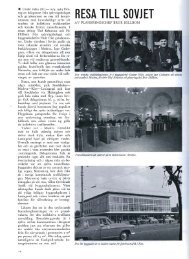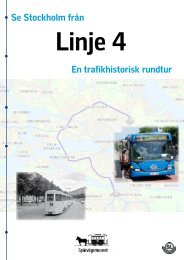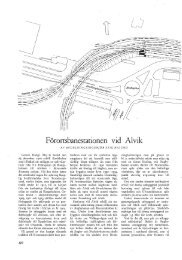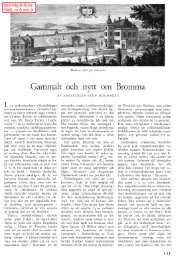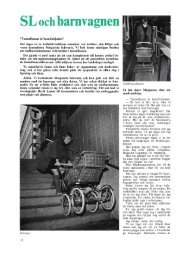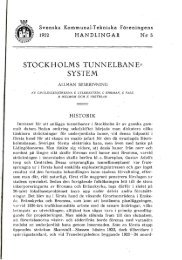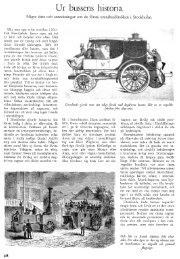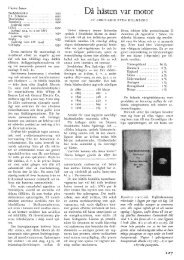Reliability of Stockholm Subway - Index of
Reliability of Stockholm Subway - Index of
Reliability of Stockholm Subway - Index of
Create successful ePaper yourself
Turn your PDF publications into a flip-book with our unique Google optimized e-Paper software.
transit more because <strong>of</strong> shorter travel times and less crowded vehicles) and<br />
attractiveness (new costumers would be attracted with the service with better<br />
regularity). They also conclude that changes in the regularity also influence the<br />
capacity efficiency, which might affect the operational costs.<br />
There are also papers concerning reliability <strong>of</strong> underground transit. Doyle (2000) in<br />
his study <strong>of</strong> New York City subway reliability analyzes data using NYC Transit‟s<br />
own measure <strong>of</strong> reliability. He calls it “Service regularity” which determines the<br />
proportion <strong>of</strong> headways falling within an acceptable range <strong>of</strong> the length they are<br />
scheduled to be. The measure “is the percentage <strong>of</strong> intervals between trips departing<br />
from all scheduled time points, not including terminals, which is within ± 50 percent<br />
<strong>of</strong> the scheduled interval (for all scheduled intervals less than ten minutes), or within<br />
± 5 minutes <strong>of</strong> the scheduled interval (for scheduled intervals <strong>of</strong> 10 minutes or more”<br />
(Doyle, 2000).<br />
Bylund and Lindholm (2004), studying the punctuality <strong>of</strong> <strong>Stockholm</strong> subway with<br />
passenger questionnaire, make a conclusion that commuters frequently using the<br />
subway are the most unsatisfied with the punctuality <strong>of</strong> the provided service. The<br />
most hard-to-please group is young people. Authors suppose that the reason is the<br />
young commuters have fewer possibilities to change the transportation mode and have<br />
to use subway more <strong>of</strong>ten than older commuters; therefore they are more sensitive to<br />
the service punctuality than other groups.<br />
Dixon (2006) in his thesis proposes the idea <strong>of</strong> utilizing data stored in a rail transit<br />
operations controls system <strong>of</strong> Boston metro network in order to evaluate the subway<br />
performance. He develops a tool that extracts and uses information from the database<br />
for analyzing the operations <strong>of</strong> rail transit lines. Carrying out the research with the<br />
help <strong>of</strong> the tool Dixon reveals weaknesses <strong>of</strong> the current service and proposes<br />
reasonable changes in timetable which could improve the subway performance. In a<br />
19





